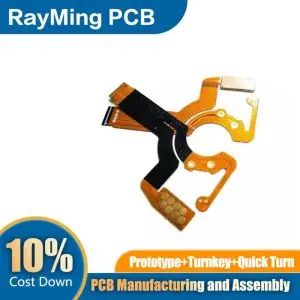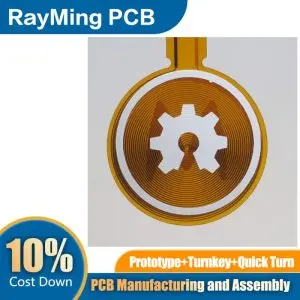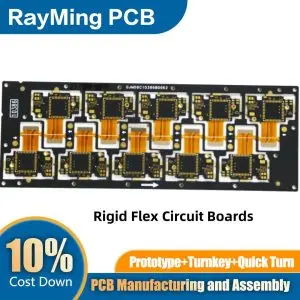The evolution of flexible printed circuit (FPC) technology has demanded increasingly sophisticated dielectric materials and testing standards. The Institute for Printed Circuits (IPC) recognized this need when it revised IPC 4202 in 2010, releasing IPC 4202A with significant updates that reflect advances in materials science, manufacturing processes, and application requirements. This comprehensive analysis examines the key differences between these two standards and their impact on the flexible electronics industry.
Background and Context
IPC 4202, originally published in 2002, established the foundation for flexible dielectric materials used in printed circuit applications. The standard addressed the growing need for standardized testing methods and performance criteria as flexible circuits became increasingly prevalent in consumer electronics, automotive applications, and aerospace systems. However, by the mid-2000s, technological advances and industry feedback revealed gaps in the original standard that necessitated a thorough revision.
The 2010 revision, designated IPC 4202A, emerged from extensive industry collaboration and represented a significant maturation of flexible circuit dielectric standards. This update addressed emerging material technologies, refined testing methodologies, and incorporated lessons learned from nearly a decade of real-world applications.
Powered By EmbedPress
Material Classification and Categorization Updates
One of the most significant changes in IPC 4202A involves the expanded and refined material classification system. The 2002 version provided a basic framework for categorizing flexible dielectric materials, but the 2010 revision introduced a more nuanced approach that better reflects the diversity of available materials and their specific applications.
The updated standard introduced additional material categories, including specialized high-temperature polyimides, liquid crystal polymers (LCP), and advanced fluoropolymer compositions. These additions reflected the industry’s move toward more demanding applications requiring superior thermal stability, chemical resistance, and dimensional stability. The 2010 revision also provided clearer guidance on material selection criteria, helping designers match dielectric properties with specific application requirements.
Furthermore, IPC 4202A expanded the coverage of adhesive systems used in flexible circuits. While the 2002 version focused primarily on traditional acrylic and epoxy adhesives, the updated standard acknowledged the growing use of adhesiveless constructions and alternative bonding technologies. This expansion recognized the industry trend toward thinner, more reliable flexible circuits with improved electrical performance.
Enhanced Testing Methodologies
The testing procedures outlined in IPC 4202A represent a substantial improvement over the 2002 version. The updated standard incorporated more rigorous and comprehensive testing protocols that better simulate real-world operating conditions. These enhancements address several critical areas where the original standard proved insufficient.
Thermal cycling tests received significant attention in the 2010 revision. The updated procedures include more severe temperature excursions and extended cycle counts that better reflect the demanding environments encountered in automotive and aerospace applications. The standard also introduced improved sample preparation techniques and more precise measurement methods for assessing thermal-induced dimensional changes.
Electrical testing protocols underwent substantial refinement in IPC 4202A. The updated standard includes more comprehensive dielectric strength testing procedures, improved methods for measuring dielectric constant and dissipation factor across broader frequency ranges, and enhanced protocols for evaluating insulation resistance under various environmental conditions. These improvements enable more accurate prediction of electrical performance in service conditions.
Mechanical testing also received considerable enhancement. The 2010 revision includes improved tear strength testing methods, more comprehensive flexibility and bend testing protocols, and enhanced procedures for evaluating adhesion strength between layers. These updates address critical reliability concerns that emerged as flexible circuits found applications in increasingly demanding mechanical environments.
Environmental and Reliability Testing Improvements
Environmental testing represents one of the most significantly enhanced areas in IPC 4202A. The 2010 revision introduced more comprehensive humidity testing protocols that better simulate the challenging environments encountered in mobile electronics and outdoor applications. The updated standard includes extended exposure periods, more severe humidity levels, and improved methods for assessing moisture absorption and its effects on electrical and mechanical properties.
Chemical resistance testing also received substantial improvement. While the 2002 version provided basic chemical exposure testing, IPC 4202A expanded this to include a broader range of chemicals commonly encountered in manufacturing and service environments. The updated standard includes specific protocols for evaluating resistance to flux chemicals, cleaning solvents, and environmental contaminants that can affect long-term reliability.
Accelerated aging tests in the 2010 revision better reflect the increasing reliability requirements of modern applications. The updated standard includes more sophisticated aging protocols that combine multiple stressors simultaneously, providing more realistic assessments of long-term performance. These improvements enable more accurate lifetime predictions and better material selection for specific applications.
Specification Requirements and Performance Criteria
IPC 4202A introduced more stringent and comprehensive performance requirements compared to its 2002 predecessor. The updated standard established tighter tolerances for key properties such as dimensional stability, coefficient of thermal expansion, and dielectric properties. These enhanced requirements reflect the industry’s increasing demand for precision and reliability in flexible circuit applications.
The 2010 revision also introduced new performance categories that address specific application needs. High-reliability applications, such as those found in medical devices and aerospace systems, received dedicated specification requirements that ensure appropriate material selection and performance verification. Similarly, cost-sensitive consumer applications received guidance that balances performance requirements with economic considerations.
Electrical performance specifications underwent significant enhancement in IPC 4202A. The updated standard includes more comprehensive requirements for dielectric strength, insulation resistance, and dielectric properties across broader temperature and frequency ranges. These improvements ensure that materials meet the demanding electrical performance requirements of modern high-speed digital and RF applications.
Documentation and Traceability Enhancements
The 2010 revision placed greater emphasis on documentation and traceability requirements. IPC 4202A introduced more comprehensive record-keeping requirements for material qualification testing, manufacturing process controls, and quality assurance activities. These enhancements support the increasingly stringent traceability requirements found in automotive, aerospace, and medical device applications.
The updated standard also improved guidance on material data sheets and technical documentation. IPC 4202A established standardized formats for presenting material properties and test results, facilitating better communication between material suppliers, circuit manufacturers, and end users. This standardization reduces the potential for misunderstandings and ensures that critical performance information is properly communicated throughout the supply chain.
Industry Impact and Adoption Challenges
The transition from IPC 4202 to IPC 4202A presented both opportunities and challenges for the flexible circuit industry. Manufacturers needed to update their testing equipment and procedures to comply with the enhanced requirements, representing a significant investment in some cases. However, the improved testing methods and performance criteria enabled better material characterization and more reliable product development.
The updated standard also influenced material supplier development priorities. The enhanced requirements in IPC 4202A drove innovation in dielectric material formulations, leading to improved products with better thermal stability, lower moisture absorption, and enhanced reliability. This virtuous cycle of standard improvement driving material advancement has benefited the entire industry.
Future Implications and Ongoing Evolution
The successful implementation of IPC 4202A demonstrated the importance of regularly updating industry standards to keep pace with technological advancement. The improvements introduced in the 2010 revision have provided a solid foundation for continued innovation in flexible circuit dielectrics. As new applications emerge and performance requirements continue to increase, the lessons learned from the IPC 4202 to IPC 4202A transition will inform future standard development efforts.
The enhanced testing methodologies and performance requirements established in IPC 4202A have raised the overall quality and reliability of flexible circuit products. This improvement has enabled the expansion of flexible circuits into increasingly demanding applications, furthering the growth and technological advancement of the industry.
Conclusion
The evolution from IPC 4202 (2002) to IPC 4202A (2010) represents a significant advancement in flexible printed circuit dielectric standards. The updated standard addresses critical gaps in the original version while incorporating advances in materials science, testing technology, and application requirements. The enhanced testing methodologies, expanded material coverage, improved performance criteria, and better documentation requirements have strengthened the foundation for flexible circuit development and manufacturing.
These improvements have had lasting positive impacts on the industry, enabling the development of more reliable and capable flexible circuit products. As the demand for flexible electronics continues to grow across diverse applications, the robust foundation established by IPC 4202A will continue to support innovation and quality improvement in this dynamic field. The success of this standard revision demonstrates the importance of continuous improvement in industry standards to support technological advancement and market growth.




